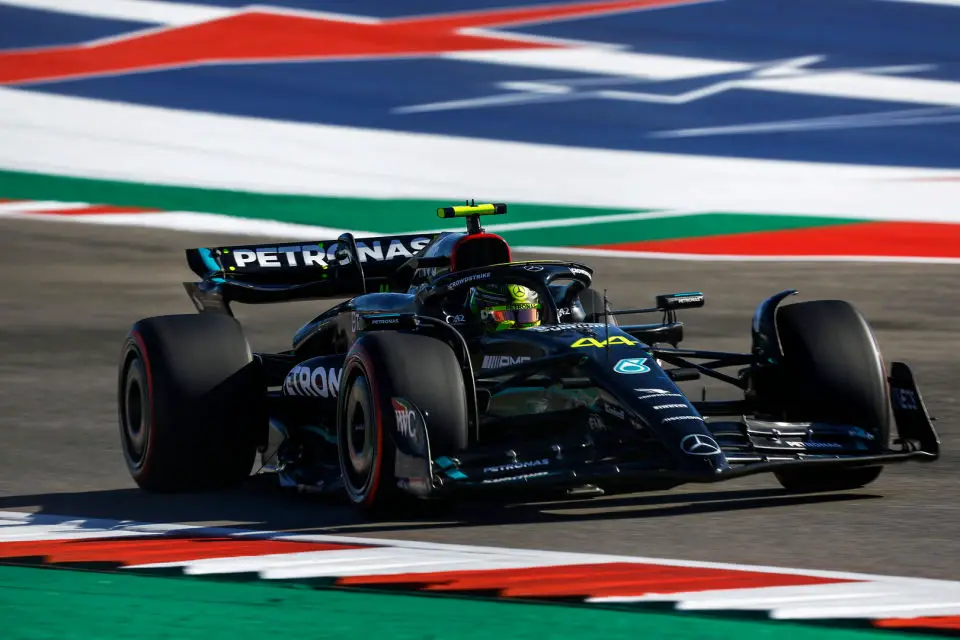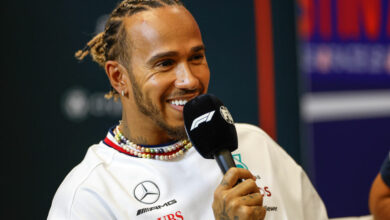Mercedes F1 Team Close to Victory at US Grand Prix, Hindered by Strategy and Pit Stops
Mercedes team principal Toto Wolff expressed confidence in the W14’s capability to outpace Red Bull at the United States Grand Prix, attributing the missed opportunity to strategic errors and slow pit stops. Despite strong performance and upgrades, these factors ultimately led to Mercedes not clinching the top spot.
Key Takeaways:
- Mercedes’ Upgraded W14: The latest floor upgrade on the W14 significantly improved the car’s pace, allowing Lewis Hamilton to close the gap with Red Bull’s RB19. Wolff believes the car was fast enough to challenge for the win.
- Pit Stop and Strategy Setbacks: The team’s strategy to extend the first tire stint and subsequent slow pit stops cost them valuable time. Wolff highlighted these as key factors in failing to capitalize on their improved performance.
- Alternate Strategy Considerations: Wolff admitted the team’s decision to diverge from a similar strategy to Red Bull’s was influenced by the latter’s dominance throughout the season. They hoped an alternative approach would increase their chances of winning.

Mercedes’ performance at the United States Grand Prix in Austin marked a significant turning point in their season. Under the leadership of Toto Wolff, the team displayed remarkable improvement, especially following the latest upgrades to their W14 Formula 1 car. These improvements were evident as Lewis Hamilton maintained a close gap with the leading Red Bull car, driven by Max Verstappen.
Despite the enhanced performance, Mercedes faced critical setbacks due to their strategic choices and slower-than-expected pit stops. Wolff, in his discussion with Motorsport.com, acknowledged the potential of their car. He said, “Yeah. I think the car was quick. Lewis drove fantastically and if I count all the things that went against us…” This statement underscores his belief in the team’s capability to win. He further detailed the impact of the slow pit stops and the time lost behind other drivers, which significantly affected their race outcome.
One of the pivotal moments in the race was the decision to extend the first tire stint, aiming for a single-stop strategy. This move, however, did not play out as expected, with Wolff noting a significant decline in performance during this phase. He reflected, “On last 19 or 20, when Max pitted, we knew that we only needed to make three more laps to make a one-stop stick…” This strategy, while ambitious, ultimately contributed to their inability to capitalize on their improved performance.
Wolff also touched upon the team’s mindset in choosing an alternate strategy to Verstappen’s. Given Red Bull’s dominance throughout the season, Mercedes felt that mirroring their strategy would not suffice for a victory. Wolff’s strategy was to increase their chances of winning through a different approach. He concluded, “With the one stop, we felt we could win, or there’s more bigger chances to win. And at the end, the [tyre] performance was not as we thought.”
In summary, while Mercedes showed remarkable progress and had a car capable of winning, strategic decisions and pit stop delays were key factors that prevented them from securing a victory at the United States Grand Prix. The team’s approach to the race, while innovative, did not yield the desired result, but it demonstrated their potential to challenge the dominant forces in Formula 1.




